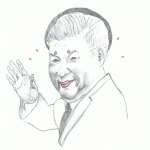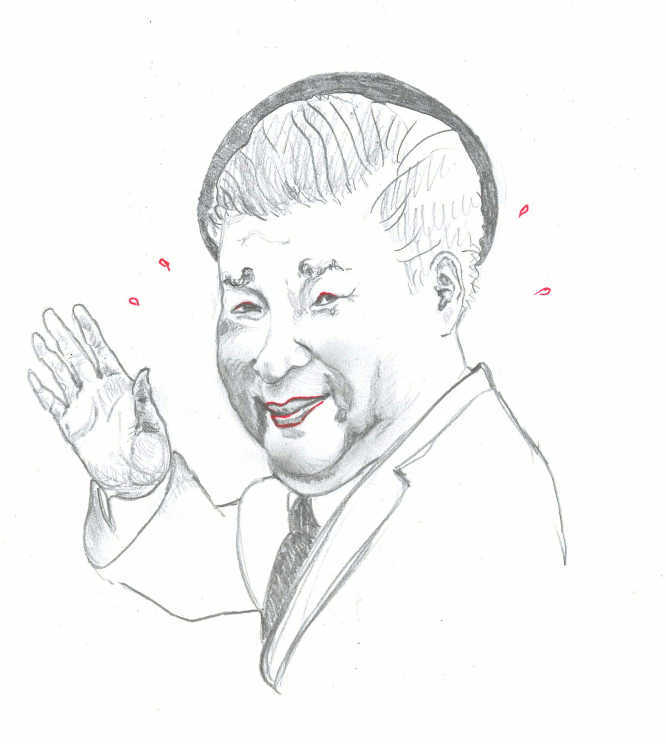While Indo-Pacific is a region defined by connectivity, it is also one of strong contestations and conflicts. One source of contestation arises from the rise of China. For India and Japan, both dependent on their maritime connections, China is not only a major trading partner but also a potential security threat. China threat consists in its potential ability to challenge their vital national economic and energy interests.
Indo-Pacific refers to the region consisting of the Indian Ocean Region and Western Pacific. Beginning from Eastern Africa and going through the East and South Asia all the way to South China Sea, Taiwan, Japan, Indonesia and Australia, Indo-Pacific is home to world’s most populous countries, various great powers, natural resources and production hubs of Factory Asia. As a maritime region, it connects Factory Europe and Americas with Asia. In this manner, Indo-Pacific is a key geostrategic and economic area for the US, the EU as well as other great power outside the region.
Thus, fear of China’s growing influence in the maritime region as well as throughout Eurasia threatens also the terms with which Europeans and America’s have access to the region. For these reasons, China provides a major impetus for deeper cooperation between India and Japan.[1]
China’s rise is symptomatic of global power shifts, which have left world order and global governance in turmoil and scientists in a state of uncertainty. I will here mention three lines of the foreign policy debates on how the Indo-Pacific states should react on these changes.
First group believe in containment strategy, second in cooperating with China and together with other regional and outside powers, most notably the US and the EU, and finally, a third group believes that Indo-Pacific states should act independently of both China and the US and rebalance both of them.
Proponents of containment policy include also those who would welcome closer cooperation with the US. They might believe that US Strategy for a Free and Open Indo-Pacific is as much about open globalization as Xi Jinping argues the Belt and Road Initiative is (while notable scholars have argued that they both are about geopolitical interests instead of openness[2]). They would also welcome continued attempts to revitalize the Quad between Australia, Japan, India and the US, push Pakistan out of South Asian Association for Regional Cooperation (SAARC) and possibly even oust China out of the BRICS.
Some others would rather continue deepening cooperation with China but simultaneously seeking deeper cooperation among states in the North-Eastern outskirts of the Pacific as well as the European powers. They might even consider giving in to China’s requests of entering SAARC, and would happily conclude the Bangladesh–China–India–Myanmar Economic Corridor (BCIM-EC)[3].
With regard to economic integration, however, deepening cooperation on inclusive footing is difficult. What hampers deeper economic engagement between India, Japan, Australia, as well as the smaller Indo-Pacific states, is the heterogeneity of their national economies: steep differences in economic development and regulatory institutions. Thus, while Japan has reinvigorated Transpacific Partnership (TPP), India is lending its economic muscle to China through its membership in the ASEAN+based Regional Comprehensive Economic Partnership (RCEP).
For geopolitical purposes, letting China dominate economic integration policies is bad policy both for developing and developed countries. From a geopolitically inspired policy perspective, China’s dominance should be balanced with an inclusive Mega-Regional Trade Diplomacy that combines Western powers and Indo-Pacific states. However, from economic perspective, many developing countries India included might just be economically better off with China and the RCEP than a Mega-Regional Trade Deal designed by developed countries (like the TPP).
Thus, the dilemma in the Indo-Pacific is that the geopolitical and economic rationales are contradictory and not easy to combine. The discriminatory nature of in particular of global value chain integration as well as the unfair costs for developing countries caused by developed country Mega-Regionals form a key problem set at the center of the dilemma.
The story should not end here, because the developed country Mega-Regional Trade Deals can be improved and there is a strategic interest in doing that. The problems of discriminatory gains and costs of joining could be tackled by looking at least to the following conditions:
- improving developing country connectivity to regional and global values chains: technical, regulatory and financial assistance to developing countries to share the burden of higher standards,
- political multi-stakeholder supervision over implementation of deep RTAs,
- raising the regulatory standards also for non-trade issues, particularly for environmental, health and labour right related matters.
- [Efficient accomplishment of these points might go so far as to require public foreign direct investments for developed to developing countries as well as international taxation reforms.]
Marko Juutinen
[1] Khuranam, Gurpreet (2007), ‘Security of Sea Lines: Prospects for India–Japan Cooperation’, Strategic Analysis, Vol. 31, No. 1, 139-154. DOI: 10.1080/09700160701355485
[2] Palit, Amitendu (2018), ‘Trade Wars: America’s new narrative on trade, security and connectivity resonates China’s ‘geopolitical’ BRI, Financial Express, 1 November, available at, https://www.financialexpress.com/opinion/trade-wars-americas-new-narrative-on-trade-security-and-connectivity-resonates-chinas-geopolitical-bri/1368530/
[3] Juutinen, Marko (2018), ‘Kautilyan foreign policy analysis: Sino-Indian dynamics in South Asia and the Indian Ocean region’, Journal of the Indian Ocean Region, 14:2, 206-226, DOI: 10.1080/19480881.2018.1472859


